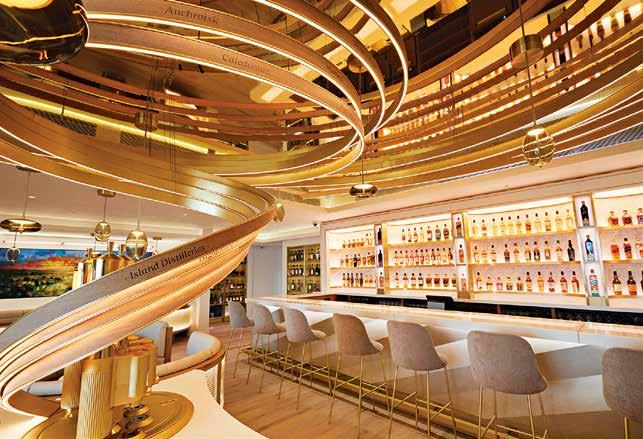
5 minute read
johnnie’s story
from YTL Life Fall 2022
by IMV Malaysia
the dandy of blended scotch whisky keeps striding on.
Words by JUNE MONG-LOFTIN AND WEI-YU WANG
John Walker, born in 1805 in Kilmarnock in southwestern Scotland, was among the many Scottish grocers and merchants in the 19th century who blended, bottled and sold their own whiskies in their shops. They were not distillers but many went on to found blended whisky brands. In early September 2021, the world’s best-selling Scotch whisky brand –bearing the name of Johnnie Walker – opened a massive visitor centre in the Scottish capital of Edinburgh: an eight-storey, 71,500 sq ft edifice that celebrates its 200 years of history and the liquid craft that is so beloved by consumers worldwide. The project took four and a half years to realise and is the highlight of Diageo’s £185 million investment in Scotch whisky tourism – the largest single amount ever put forward for that industry, which attracted a record 2.16 million people in 2019.
Johnnie Walker Princes Street, the space in which Johnnie Walker now resides, is many decades old. It was once occupied by the now-defunct Binns department store, and more recently House of Fraser. The ‘B’ emblem on the side of the building and its cantilever clock (that was fully restored as part of Johnnie Walker’s renovations) are well-known sights in historical Edinburgh. The torch has been passed, and the city now has a new landmark that pays homage to Scotland’s most renowned export.
This new home to the bestselling Scotch whisky brand in the world lies a 15-minute drive away from The Glasshouse Hotel, Edinburgh, a beautifully restored chapel that preserved its 140-year-old gothic façade with its 20 suites named after specific Scotch whiskies. Naturally, guests of The Glasshouse Hotel will be able to have the concierge book their ticket and taxi for a visit to the latest whisky attraction in the city.
Once they’ve arrived, they begin the Journey into Flavour immersive experience, which takes them back to the origins. They see John, a farmer’s son who became a grocer and began blending his own whisky to achieve a richer and more consistent flavour. In 1857, his son Alexander came up with the slanted label and the square bottles to ease shipping and packing, thus broadening a whisky empire into the further reaches of the world. In 1902, a top illustrator, Tom Browne, created the Striding Man figure for the brand – a dandy in a bright red coat, riding breeches, top hat and walking stick –and Johnnie’s been striding on ever since.
At Johnnie Walker Princes Street, visitors may expect a guided tour with Alba, a raconteur par excellence, and a whisky theatre that utilises an inventive audiovisual show (animator Christina is a superb touch at the visual aspects of storytelling). A touch-and-taste technique is employed to transport guests around the four corners of Scotland and showcase the different flavours and characteristics of whisky that the regions produce. It’s a wonderful evocation of the roles played by Scotland’s distinctive flora, climate, soil and water to make whisky. In one room, guests were taken around the four seasons and the whisky characteristics which are compatible with them.
The Johnnie Walker experience also very quickly dispels some whisky-drinking myths. As Alba might say: “There’s no right or wrong way to drink whisky. It’s okay to drink it with ice; it doesn’t have to be drunk neat; and yes, you can drink blended whisky with a mixer.” But what they do emphasise is that it’s important to choose your glass, inhale the bouquet, savour the taste and take your time.
Before visitors start their experience, a Flavour Quiz helps discern their taste profile: fresh, smoky, fruity, etc. They then receive a corresponding coloured wrist band for a bespoke highball or old-fashioned cocktail. They are then offered choices of rosemary, candied ginger, sun-dried tomatoes, dried rose petals and more to have as garnishes, opening up new and unexpected flavours.
And what if whisky has never been your thing? Not a worry; this experience is still for you – the Johnnie Walker hosts make the most delicious and refreshing non-alcoholic cocktails which you would still enjoy, the performance included.
For more information go to www.theglasshousehotel.co.uk
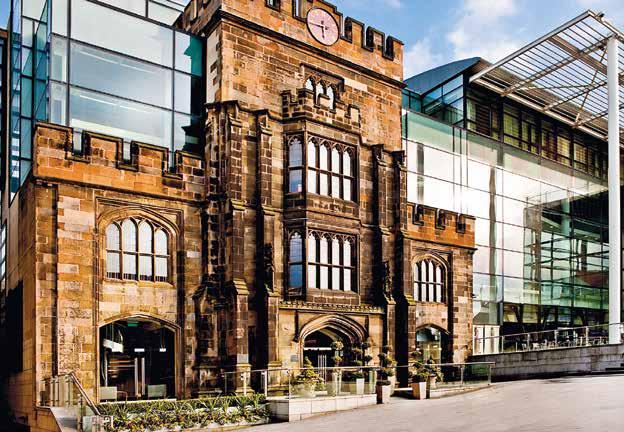
Picasso 100
visitors to melbourne winter masterpieces 2022 are in for a rare treat with an extensive exhibition tracing more than 70 years of the spanish artist’s prolific journey.
Words by MINDY TEH
Guests of the Melbourne Marriott Hotel will be happy to note that it is a mere 14-minute tram ride or a pleasant 20-minute walk away from the city’s Art Precinct, where the National Gallery of Victoria (NGV) is located. The hotel’s selection of rooms includes some with private garden courtyards and others with a hot tub and cinema or pet-friendly facilities. Dining options cater to a wide range of tastes, from farm-to-plate dining at the signature Country Bred at Lonsdale to contemporary cuisine featuring the finest locally sourced produce at Essence.
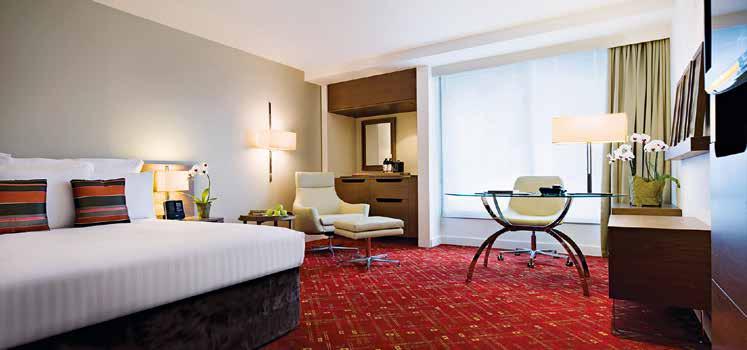
Art lovers will be thrilled at being this close to the NGV. Founded in 1861, it is the oldest gallery in Australia and houses a vast treasury of more than 76,000 works that span thousands of years. It also hosts a wide range of events, such as The Picasso Century, a world-premiere exhibition that highlights the works of Pablo Picasso. Organised as part of Melbourne Winter Masterpieces, a series of major exhibitions held over 100 days in the city, The Picasso Century promises an extensive chronology tracing more than seven decades of the Spanish artist’s journey and its evolution. Over 70 masterpieces by Picasso are on display including paintings, sculptures, drawings and ceramics. Exclusively developed for the NGV by Centre Pompidou and Musée national PicassoParis, the exhibition was curated by the noted scholar of 20th-century painting, Didier Ottinger, who is also Deputy Director of Centre Pompidou.
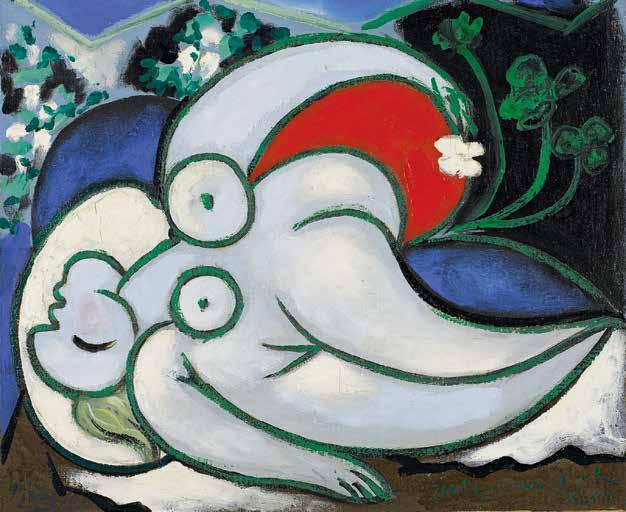
Visitors gain a deeper insight into Picasso’s process in dialogue with his contemporaries, friends, muses, lovers and wives. The maestro kept company with an impressive list of intellectuals, artists, models and the literati, and these diverse encounters and relationships steered him through notable periods, from his Blue Period to cubism and surrealism. The likes of Guillaume Apollinaire, Georges Braque, Alberto Giacometti, Françoise Gilot, Valentine Hugo, Marie Laurencin, Dora Maar, André Masson and
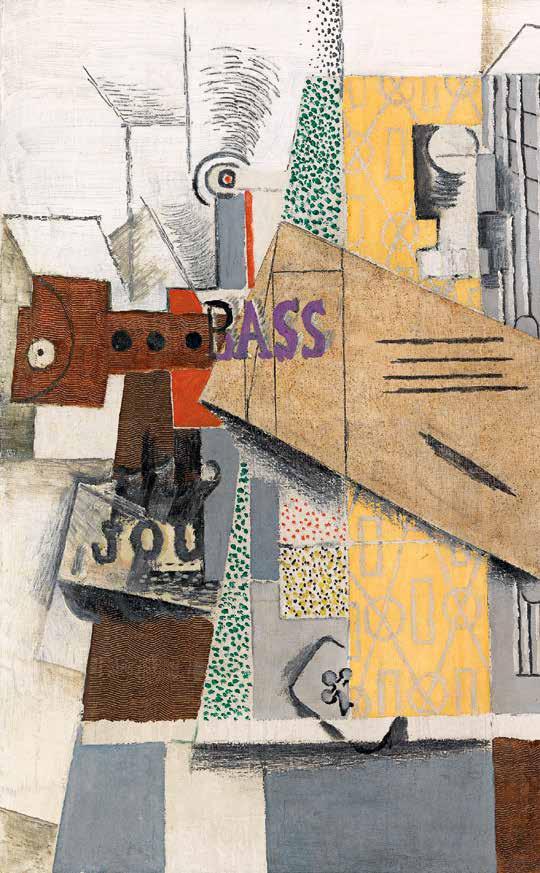
Dorothea Tanning lent a greater perspective on Picasso’s genius and inadvertently shaped his work.

The beginning of the exhibition examines Picasso’s significant artistic developments including cubism, the movement formed together with Georges Braque that radically transformed 20th-century art. Picasso’s place in interwar Paris among peers such as André Breton, Georges Bataille, Aimé Césaire, Alberto Giacometti and Gertrude Stein is also highlighted. The exhibition pays particular attention to Picasso’s surrealist phase, presenting works from this period alongside those of Kay Sage, Max Ernst, Salvador Dalí, Giorgio de Chirico and Masson.

The maestro’s impact on the art world reverberated through his contemporaries and The Picasso Century also showcases over 60 works by his peers, artists rarely exhibited in Australia. These include works by Natalia Goncharova, Julio González, Wifredo Lam, Suzanne Valadon and Maria Helena Vieira da Silva.
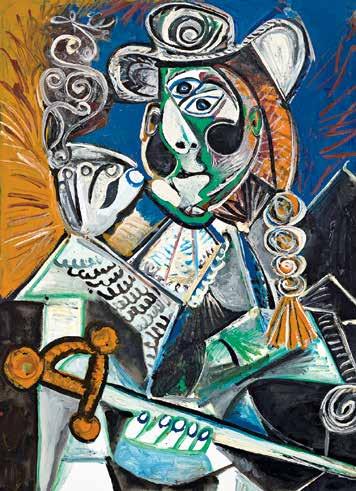
The final section of this comprehensive display sees Picasso’s impact on the international art world post-1945 with his artistic output in the 1950s and 1960s positioned alongside those by Francis Bacon and Willem de Kooning. The inclusion of a 2009 video entitled I See A Woman Crying (Weeping Woman) by Rineke Dijkstra coaxes viewers to reflect on Picasso’s pioneering efforts in pushing art into the modern age, with their effects continuing to be felt and seen well into the 21st century.
NGV’s younger patrons have not been forgotten. A free children’s exhibition, Making Art: Imagine Everything Is Real, features immersive hands-on activities and multimedia experiences. Kids create their own works of modern art through collage, poetry and more while learning about some of the leading European artists showcased in The Picasso Century including, of course, the maestro himself.











